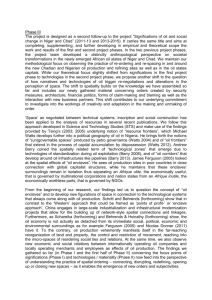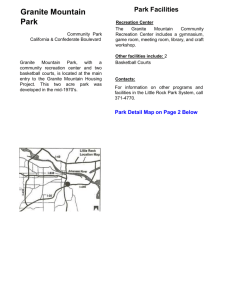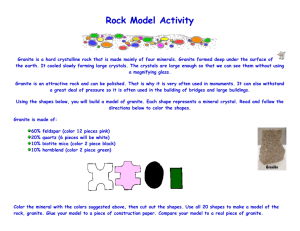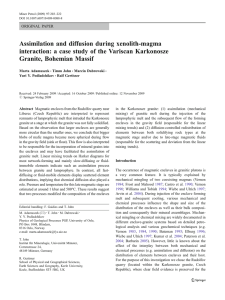Fine-grained felsic enclaves in the homogeneous granite zone of
advertisement
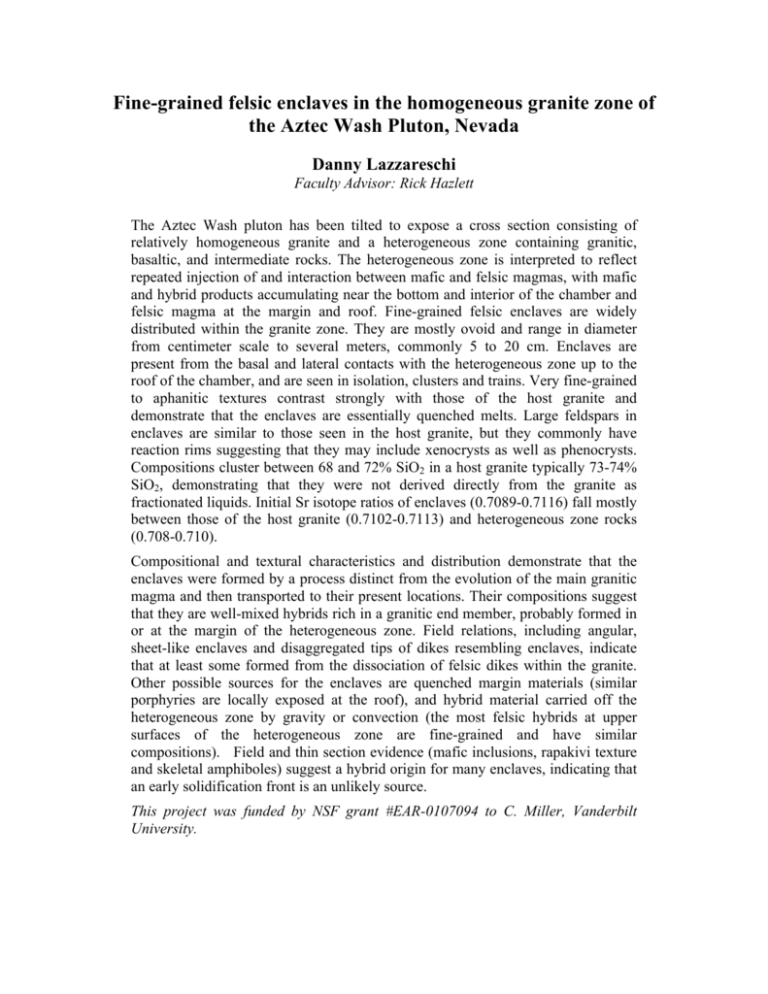
Fine-grained felsic enclaves in the homogeneous granite zone of the Aztec Wash Pluton, Nevada Danny Lazzareschi Faculty Advisor: Rick Hazlett The Aztec Wash pluton has been tilted to expose a cross section consisting of relatively homogeneous granite and a heterogeneous zone containing granitic, basaltic, and intermediate rocks. The heterogeneous zone is interpreted to reflect repeated injection of and interaction between mafic and felsic magmas, with mafic and hybrid products accumulating near the bottom and interior of the chamber and felsic magma at the margin and roof. Fine-grained felsic enclaves are widely distributed within the granite zone. They are mostly ovoid and range in diameter from centimeter scale to several meters, commonly 5 to 20 cm. Enclaves are present from the basal and lateral contacts with the heterogeneous zone up to the roof of the chamber, and are seen in isolation, clusters and trains. Very fine-grained to aphanitic textures contrast strongly with those of the host granite and demonstrate that the enclaves are essentially quenched melts. Large feldspars in enclaves are similar to those seen in the host granite, but they commonly have reaction rims suggesting that they may include xenocrysts as well as phenocrysts. Compositions cluster between 68 and 72% SiO2 in a host granite typically 73-74% SiO2, demonstrating that they were not derived directly from the granite as fractionated liquids. Initial Sr isotope ratios of enclaves (0.7089-0.7116) fall mostly between those of the host granite (0.7102-0.7113) and heterogeneous zone rocks (0.708-0.710). Compositional and textural characteristics and distribution demonstrate that the enclaves were formed by a process distinct from the evolution of the main granitic magma and then transported to their present locations. Their compositions suggest that they are well-mixed hybrids rich in a granitic end member, probably formed in or at the margin of the heterogeneous zone. Field relations, including angular, sheet-like enclaves and disaggregated tips of dikes resembling enclaves, indicate that at least some formed from the dissociation of felsic dikes within the granite. Other possible sources for the enclaves are quenched margin materials (similar porphyries are locally exposed at the roof), and hybrid material carried off the heterogeneous zone by gravity or convection (the most felsic hybrids at upper surfaces of the heterogeneous zone are fine-grained and have similar compositions). Field and thin section evidence (mafic inclusions, rapakivi texture and skeletal amphiboles) suggest a hybrid origin for many enclaves, indicating that an early solidification front is an unlikely source. This project was funded by NSF grant #EAR-0107094 to C. Miller, Vanderbilt University.



